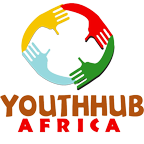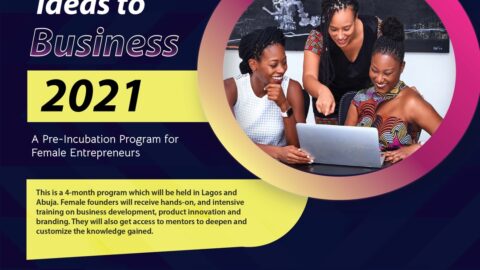By: ’Sola Fagorusi
Like a cruise ship on a draining journey, we are finally berthing on the 52nd week of the year 2013 despite all the topsy-turvy we have experienced as a nation. The world over, we have seen people that ordinarily had no voice suddenly become loud by merely squeezing the buttons of their phones or hitting at combinations of specific keys on their other Internet connected devices.
The new media has remained new in Nigeria with its use growing by the numbers. While a number of young people have strictly gone mobile with the growing inroad of mobile applications and platforms, we have also seen a sizeable number of adults join this fast moving bandwagon. What was initially seen as classy and childish in some quarters is now being embraced by people who understand that the social media in Nigeria is the new hotbed for intellectual debate and issues that ordinarily may not have found its way into national discussion through the traditional media.
In 2013, we have seen the traditional media also adjust its frame to lean more on the new media given the real time and undiluted approach with which news and analysis are served by mere citizens. We have also suddenly seen the government tinkering with ways with which to adjust this new change in power structure that the new media spectrum seems to be allowing. The pyramid seems to have been upturned by the new media since people now seem to dictate to the government through it; at least to an extent.
An example is what followed this paper’s reportage of the injustice meted on Mrs. Alexandra Ossai, who lost her seven-month pregnancy after she was allegedly kicked in the stomach by her Lebanese boss. The din it generated on social networks and on other traditional media would later cause the presidency to order an investigation.
In 2013, a good chunk of the seething news could not wait, especially in the print media, till the next morning. They were broken by online news platforms and the social network pages and handles of the traditional media. The use of YouTube videos also assumed a new dimension with citizen journalism coming to fore. Two Nigerians in different instances caught policemen on camera in different attempts to rip them off. What we have now is a Police Force that is very uncomfortable with the presence of phone(s) around them during any of their often illegal activities.
On the insurgency front, Boko Haram also continues to engage with the public using online videos to make statements. Meanwhile, given the sophistication of the group’s activities and the ways with which bombs are sometimes triggered using mobile phones, it is now an offence to receive or make calls around check points in Northern Nigeria. Thanks to ignorance of this new development, yours sincerely was almost going to be forced to embark on a road side frog jump exercise and any other punishment thought sensible by men of the Nigerian Army last week.
The year opened on a frenzied note in March, 2013 with the Oga at the Top video that went viral following an interview by Mr. Shem Obafaiye, then Lagos Commandant of the Nigeria Security and Civil Defence Corps, NSCDC. It was the first revelation in the year of what the social media was capable of doing or undoing. Infographics also became quite popular in the same year with a number of news outlets and civil society organisations using them to depict in clear terms the issue they wanted to put in public space.
The new media space also had corporate organisations make incursions with introductions of digital media desks in various institutions and job openings for social media-savvy young people. The numbers of ad videos on YouTube affirms this new development. The number of bloggers in the country also shot up in 2013 following the ease with which it was to get information out through them. The downside was however the comments section which has become war zones with citizens pouring vituperations on one another on a good number of times based mostly on ethnic, political and religious bias.
Nigerians also took their new media dexterity to the doors of our Anglophone East Africa Neighbour – Kenya with the #SomeoneTellKenyans and #SomeoneTellNigerians conversation on Twitter during the 2014 World Cup qualifiers between the two nations. Twitter in July also recognised and added local trends from five other Nigerian cities asides Lagos. They include Benin, Ibadan, Kaduna, Kano and Port-Harcourt. In addition, the number of online warriors increased with some Nigerians becoming a brand of sort on Twitter, Facebook and Instagram especially.
In the year under review, Nigeria’s informal market also witnessed a raid by the new media with the introduction of a number of online platforms selling just everything and anything. My pick for the year is www.madamsabi.com given its organisation of what used to be chaotic and stressful. Their ability to sustain and ensure customer satisfaction would be their ace.
The bus transport system also witnessed the launch of online bus ticketing. In addition, more Nigerians also got used to online booking of flights in such quantum enough to make one ask what the future is for those running travel agencies given the do-it-yourself opportunity that the new media now allows. There are more apps by Nigerians out there at present; 2014 willd see an addition. I dearly wait for the cooking app!
We are also ending the year with the taste of the ‘Go and Die’ event in our mouth. The new media will continue to grow as the Internet penetration increases especially if the broadband policy of the government is implemented. However, like Tunji Lardner of WangoNet would say, there is the need for the cognitive continuum. The discussion on social networks needs to be made deeper and more sublime than what it is at present – if it will really count for social good.
Two More Thoughts
#NoHoodieNoHoney
Collaborating with other non-profits and individuals, the United Nations Population Fund, UNFPA has also changed the narrative approach to Behaviour Change Communication, BCC around HIV/AIDS issues. Using animations and social media tools, the #NoHoodieNoHoney advocacy is catching on especially with young ladies that it was targeted at. With two videos – Part one and part two, both under six minutes, the advocacy for abstinence and protection to prevent infection continues and creatively this time around.
Happy 2014 in advance
Thanks for keeping a date with the column this year. I am appreciative of the mails and feedbacks that have continued to shape the content here as much as I also thank God for the inspiration and strength to do the writing. Here’s wishing you all a great 2014.





